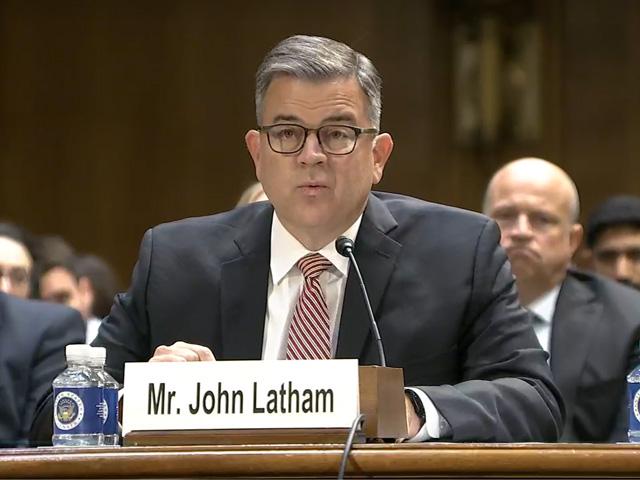Ag Input Consolidation Scrutinized
Senators Probe Market Power Behind Rising Seed and Fertilizer Costs
OMAHA (DTN) -- The seed industry for crops such as corn has become so consolidated that practices such as loyalty rebate programs stymy competition while licensing fees are driving up seed prices despite the lack of new innovations.
That was just part of the testimony on Tuesday as the U.S. Senate Judiciary Committee examined factors driving up seed and fertilizer prices for farmers. Senators questioned whether anti-competitive practices from the largest industry players are taking advantage of farmers who are also receiving lower prices for their crops.
Iowa Sen. Chuck Grassley, R-Iowa, chairman of the Judiciary Committee, said farmers are left with little choice about where to buy their inputs. "Farmers across the country are shouldering significantly higher input costs, particularly for seed and fertilizer," he said.
Some of those price pressures are also driven by policy decisions, such as 16.81% countervailing duties on phosphate from Morocco that was set initially in 2022.
Senators and witnesses repeatedly pointed out that just two companies control at least 73% of the corn seed market and two-thirds of soybean seeds. Four firms control more than three-quarters of the nitrogen fertilizer market, and four companies control virtually all of the phosphate and potash markets.
Antitrust regulators have largely overlooked "excessive consolidation" in agricultural biotechnology, said Diana Moss, vice president and director of competition policy with the Progressive Policy Institute. Companies have generally been allowed to merge by arguing that they could increase efficiencies and more easily bring new products to market.
"We now know that high levels of concentration are not necessary to drive innovation, and these mergers, on balance, produce more harm than good," Moss said.
FARMERS NOT BENEFITING FROM OFF-PATENT TECHNOLOGY
John Latham is president of Latham Quality Inc., in Iowa, an independent seed company that sells Latham Hi-Tech Seeds across the Midwest. Latham said the corn seed industry is dominated by two companies through their own brands and licensing agreements.
Latham also said farmers have seen almost no benefit from seed technology coming off-patent. He pointed to a glyphosate-resistant corn seed, NK603, that went off-patent in 2022.
"Farmers are being charged the highest royalties ever for this off-patent technology," Latham told senators.
During the past five years, royalties for seed corn have gone from 42% of the costs to now 70% of the costs for a bag of corn. "And unfortunately, there has been no new innovation. These are the existing products that we had five years ago," Latham said.
Major seed companies are manipulating the system that was supposed to help post-patent competition. Companies are supposed to deposit seed samples in the American Type Culture Collection (ATCC), a seed library. But they register corn genetics with "scrambled code," making it nearly impossible for small corn-breeding companies to find what they need in the seed library, Latham told senators.
That locks up off-patent traits, allowing companies to also use licensing requirements and stacking to prevent competition. When Latham started breeding seeds to deal with diseases such as tar spot, the company's breeding program became a problem with Latham's biggest supplier. The company raised prices for its technologies, which forced Latham to raise its prices dramatically in response.
P[L1] D[0x0] M[300x250] OOP[F] ADUNIT[] T[]
"Imagine having to license all of your technology from your largest competitor and then have to give your competitor internal company information, including the names and orders of all of your customers," Latham said.
Asked by Sen. Mike Lee, R-Utah, about barriers for independent seed producers, Latham pointed to "restrictive rebates" that stifle competition. If farmers choose to go with a small company with a new product, they are going to lose their rebates with the big companies.
"The rebates are very punitive for independent companies," he said.
Broad licensing of off-patent products and increased investment in technology such as gene editing would spur more innovation in the seed industry, Latham said.
"Right now, when you have a couple of different companies that are controlling the whole market, it makes it very difficult for our company to invest in new technology," he said.
Grassley asked about concerns over rebate clawbacks by major companies if farmers try other companies' products.
Noah Coppess, a farmer from Stanwood, Iowa, said he had not encountered clawbacks, but rebate programs were set up to incentivize buying more product from a single supplier.
"It's very clear when we are purchasing products, the more we buy, the cheaper it gets," Coppess said. He added, "We need to try to stack that to stay profitable, so it limits our options."
Just last week, Bayer announced it would end its Bayer PLUS Rewards program "at the conclusion of the 2025 market year," the company stated. Producers have until April 30, 2026, to redeem their rewards.
The Federal Trade Commission in 2022 sued Corteva and Syngenta over their loyalty programs for crop protection tools. The U.S. District Court for the Middle District of North Carolina is overseeing the case, which has a Nov. 21, 2025, deadline to complete discovery. It's unclear if the government shutdown affects the timeline for that case. Both companies dispute the facts and law on the case.
DIGITAL FARMING FEES
Coppess, representing the Iowa Farm Bureau Federation, said farmers typically have to prepay fertilizer four to six months ahead of time, and some products such as phosphate have become so costly that farmers just buy the bare minimum.
He then talked about some of the demands from suppliers such as Deere & Co. over user agreements.
"John Deere's user agreement mandates they have access to all of the data we record from our equipment and the right to do as they please with it."
Products such as Deere's "See & Spray" reduce the use of herbicides 50% to 80%, but the tech fees are charged on a per-acre basis.
"So, we are paying a usage fee on 50% to 80% of fields that we don't even use the product for," he said.
In Coppess's written testimony, he pointed to data showing the average Iowa corn farmer's production costs have risen more than $238 per acre since 2020.
FERTILIZER PRESSURES AS WELL
Kentucky farmer Caleb Ragland, president of the American Soybean Association, pointed out that fertilizer prices spiked at the beginning of the Ukraine war. Prices came down slightly but remain well above pre-war levels.
"That has had a major impact across all of production agriculture," Ragland said.
Grassley has a bill, the Fertilizer Research Act, which would reinstate a position and report at USDA for fertilizer pricing.
Moss said increased price reporting by the federal government would promote more transparency and allow universities and think tanks to do more analysis on fertilizer markets.
Corey Rosenbusch, CEO of The Fertilizer Institute, said the trade lobby would also like to see USDA reinstate a position that focuses on fertilizer markets. Despite criticism about concentrated markets, Rosenbusch also told senators the U.S. only accounts for about 7% of the total global production of fertilizer and is a net importer of products. For a product such as potash, roughly 98% is imported.
"So, if you hear nothing else I say today, please hear this. Fertilizer is a globally traded commodity subject to fierce global competition in supply and demand," Rosenbusch said.
Increasing domestic production is also "very capital intensive," Rosenbusch said. A new nitrogen facility can cost $5 billion, or it can take a decade or more to develop a phosphate or potash mine.
Sen. Dick Durbin, D-Ill., pushed back on Rosenbusch's take about global markets, arguing the increased prices farmers are paying for fertilizer is out of line.
"The farmers who are buying your products are saying you are killing them," Durbin said. "You have consolidated, so they have few choices -- take-or-leave-it choices."
To watch the full hearing, go to: https://www.judiciary.senate.gov/…
Chris Clayton can be reached at Chris.Clayton@dtn.com
Follow him on social platform X @ChrisClaytonDTN
(c) Copyright 2025 DTN, LLC. All rights reserved.






